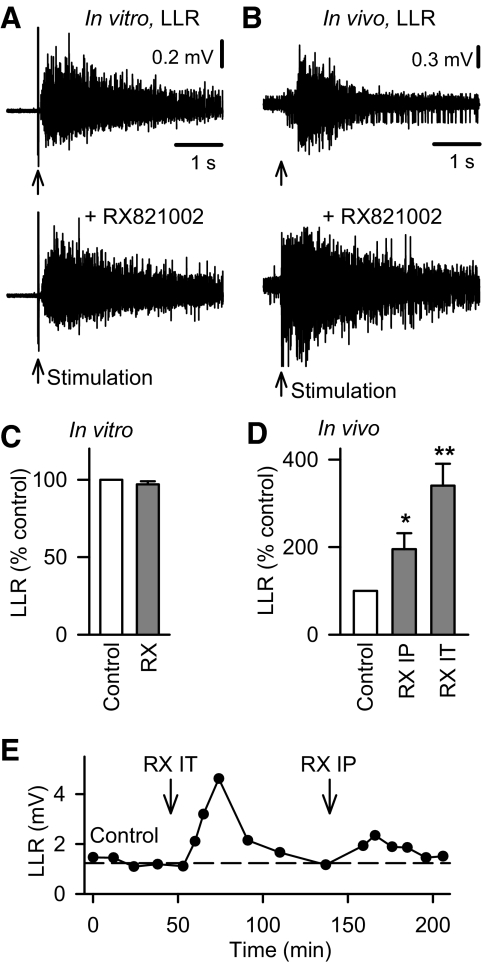Fig. 5.
The α2 adrenergic receptor is endogenously active in vivo, but not in vitro. A: LLR evoked in the isolated in vitro spinal cord (as described in Fig. 1) of a chronic spinal rat before (top plot) and after blocking possible endogenously activated α2 adrenergic receptors with the selective α2 antagonist RX821002 (0.5 μM, bottom plot). B: LLR spasm in chronic spinal rat in vivo evoked by electrical/cutaneous stimulation of the tail and recorded with tail muscle EMG (LLR computed 0.5–4 s post stimulus, as described in Fig. 1) before (top plot) and after blocking endogenously activated α2 receptors with a systemic intraperitoneal (ip) injection of RX821002 (1 mg/kg). C: normalized group mean for chronic spinal rat LLRs before and after bath application of RX821002 (abbreviated RX) in vitro (0.3–0.5 μM; n = 42) and for systemic ip injection of RX2821001 (D; abbreviated RX IP, 1–3 mg/kg; n = 11) and local intrathecal injection (abbreviated RX IT, 0.3–1 mM in 30 μl; n = 5) in vivo. E: amplitude of in vivo tail spasms of awake chronic spinal rat recorded with EMG (LLR) and measured repeatedly over time under control conditions (left), and after blocking the endogenous activation of the α2 adrenergic receptor with either local IT injection of RX821002 (abbreviated IT RX, left ↓; 0.3 mM in 30 μl) or systemic IP injection of RX821002 (abbreviated RX IP, right ↓; 1 mg/kg). *P < 0.05, **P < 0.01. Error bars, SE.

